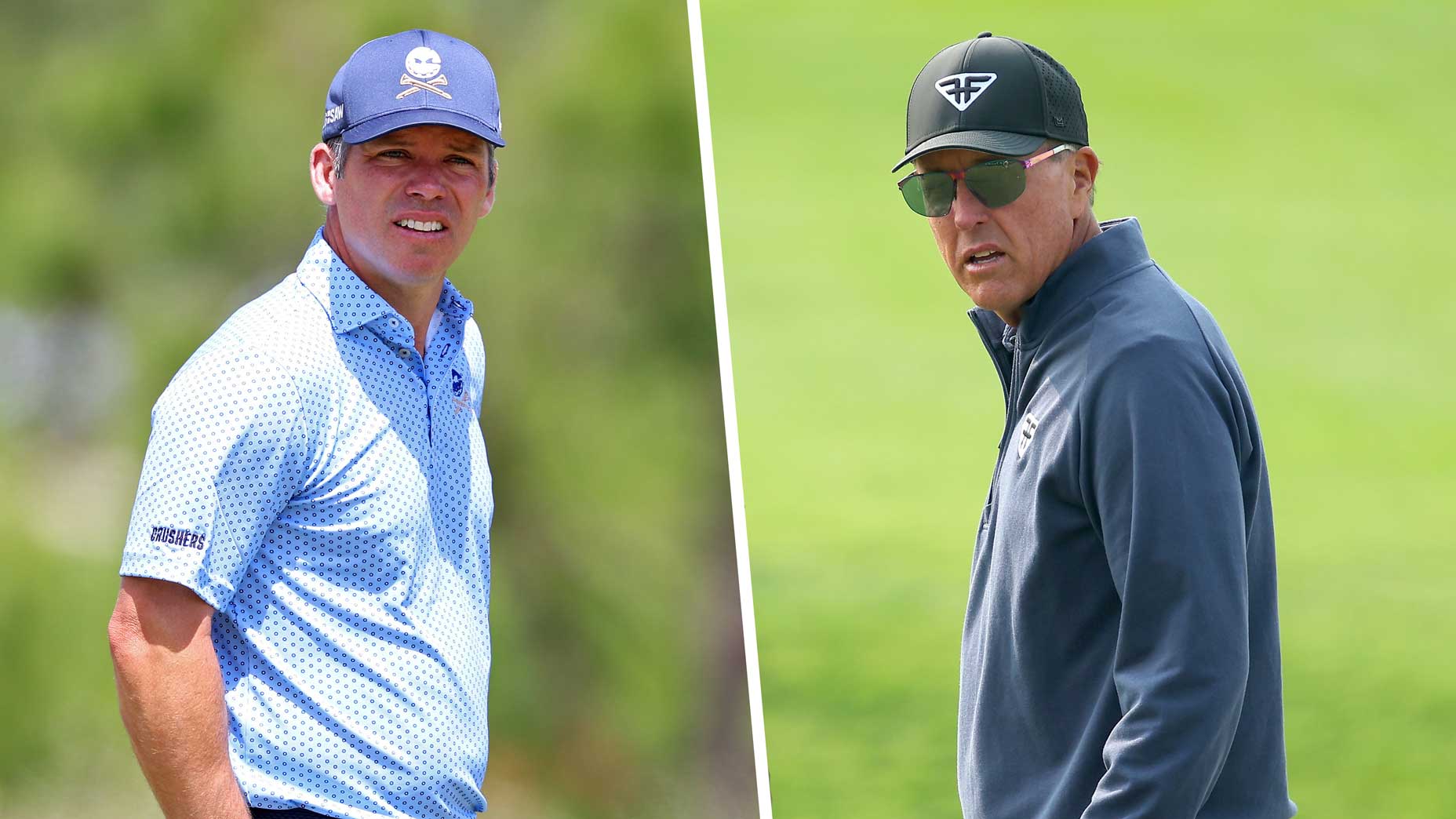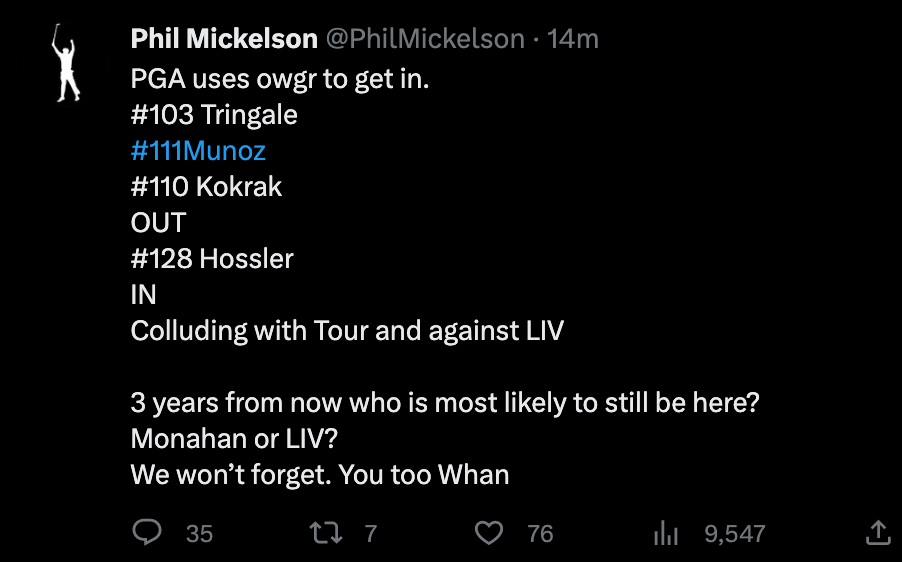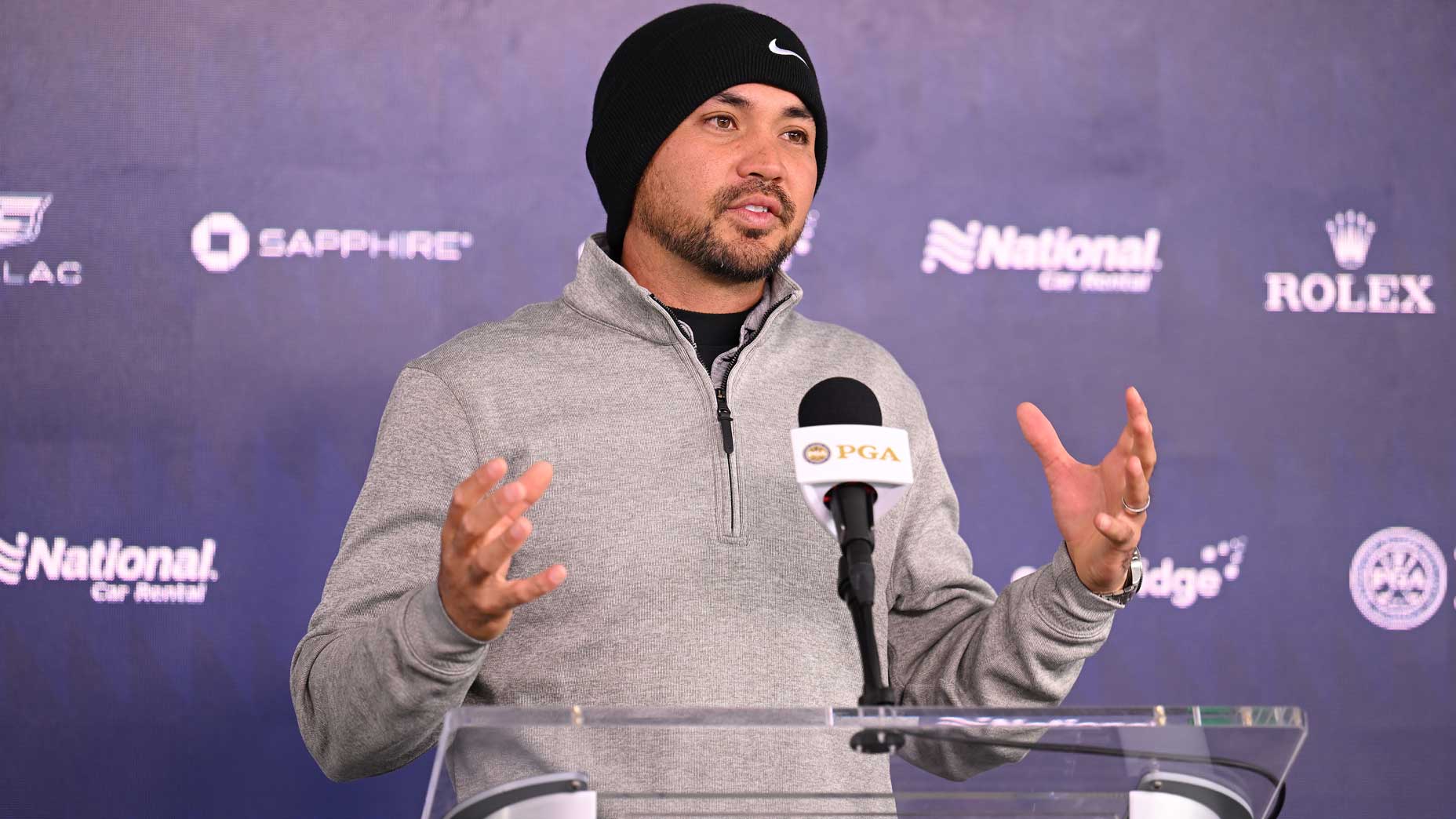
Paul Casey is in this week’s field, but Phil Mickelson wanted some other LIV golfers to join him.
Getty Images
Who’s in? Who’s out? Those questions are normally pretty straightforward at major championships. But in a way we haven’t really witnessed in the past, this year’s PGA Championship field has become a touch … controversial.
The reason why is much more clear: the existence of LIV Golf and its disruption of the status quo. For decades the PGA of America has filled the field of its major championship with a goal of having the strongest field in golf. The exemptions they have granted have largely been the same for 30 years.
Win the PGA? You’re in for a long time.
Finish in the top 15 last year in Oklahoma? You’re good.
Win a PGA Tour event in the last 12 months, you’re in, too.
There are other obvious exemptions, like five years of spots granted for winning a major, but the most important one seems to involve “PGA Championship Points,” which is a ranking based on money earned in PGA Tour events. Players in the top 70 of that list will earn an invite, too. Only after all that are a handful of special invites granted. That’s where controversy can rise. Ultimately, this process has delivered a very constant effect over the years: recent PGA Championships have hosted most, if not the entirety, of the top 100 players in the Official World Golf Ranking.
But this year, creating that ideal has proven more difficult that ever. LIV events have taken some of the best players off the PGA Tour and kept them from earning those “PGA Championship Points,” and kept them from earning many Official World Golf Ranking points. Without the points, LIV golfers have suffered in the rankings, resulting in players like, say, Paul Casey, dropping down to world No. 142. Or Louis Oosthuizen to world No. 186.
Is that the PGA of America’s fault? No. LIV is currently up against the evaluation process for earning OWGR points. The PGA of America’s involvement in that is ownership of one board seat. But for this week’s field, the PGA of America was choosey with the additional invites it gave out to those not already qualified.
“The process for inviting players who are playing well enough and good enough we will consider no matter what tours they’re playing on, just as we do this year,” Kerry Haigh, chief championships officer, said Tuesday at Oak Hill. He cited an invite given to young Ernie Els in the early 90s when he was predominantly playing on the Sunshine Tour in South Africa. These special invites are entirely up to the PGA of America. This is their tournament. But the invites were not made with much transparency.
Oosthuizen, for example, was not invited. Casey, however, was. The former has two second-place finishes in the last six years he has competed in. The latter has three top 10s in his last six PGAs. How is one invite granted and another skipped? That remains a mystery.
“Some LIV players were invited this year, some Japanese Tour, Australian Tour,” Haigh said. “Yeah, we look at all tours, all rankings, and all players’ abilities.
“Paul Casey, great player. He’s certainly had some injuries. Played on the Ryder Cup last played, and has played well in PGA Championships. Again, we review all those criteria for a number of players, and he was one of a number that were selected.”
Despite the decisions being a bit vague, we can at least infer that some LIV golfers were just left on the outside looking in. Sergio Garcia, currently ranked No. 200 in the world, was not invited, despite being a member of the same Ryder Cup team Casey played on. Henrik Stenson, who surrendered his spot as a captain in the 2023 Ryder Cup by joining LIV, is ranked No. 207. He was also not invited. Again, these invites are entirely up to the PGA of America — and should be. It’s just the subjective nature of the decision hasn’t sat well with Phil Mickelson and other LIV supporters.
Mickelson has taken to Twitter in recent weeks to allege collusion between the PGA Tour and other governing bodies. He has issued pointed statements at USGA head Mike Whan, PGA Tour commissioner Jay Monahan, and even at TV partners like CBS. Most recently, Mickelson went so far as to roll out some numbers.
“PGA uses owgr to get in,” Mickelson wrote in a since-deleted tweet.
“#103 Triangle
#111 Munoz
#110 Kokrak
OUT
#128 Hossler
IN
Colluding with Tour and against LIV
“3 years from now who is most likely to still be here? Monahan or LIV? We won’t forget. You too Whan”

Twitter.com/PhilMickelson
The problem with Mickelson’s thought here is that it begins with a falsehood. The PGA does not necessarily, nor exclusively “use owgr to get in.” Is it part of the vague evaluation process? Perhaps. Haigh wouldn’t clarify beyond stating that multiple factors go into a selection. It’s certainly not for Mickelson to say, and definitely not to say unequivocally at the top of a tweet. Perhaps that’s why it was deleted. We’ll leave that transparency up to Mickelson. If we learned anything about exemptions this week, it’s that they won’t be changing much at all moving forward.
“I don’t envision any change to the [exemption] categories that are currently there,” Haigh said.
So yes, we may be in a very similar situation next May. The comparison of LIV golfers to PGA Tour players is bound to be even murkier by then.










